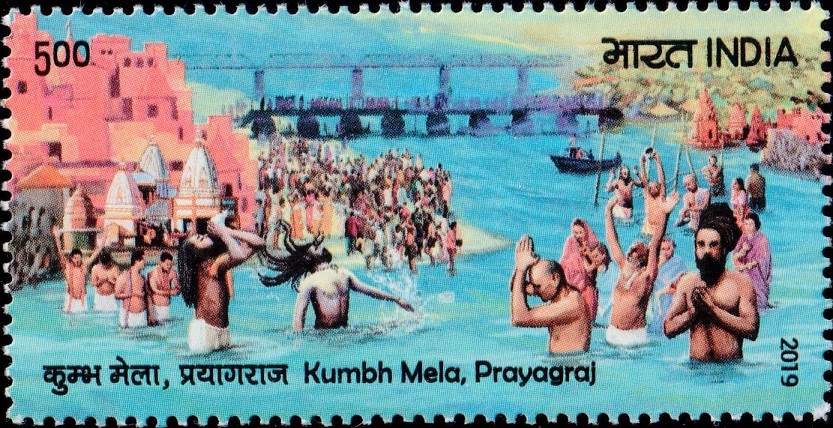
Kumbh Mela, Prayagraj
A commemorative postage stamp on the Prayag Kumbh Mela, a mela held every 12 years at Allahabad (now Prayagraj), Uttar Pradesh, India :
 Issued by India
Issued by India
Issued on Feb 2, 2019
Issued for : Department of Posts is honoured and pleased to release Commemorative Postage Stamp on this historic occasion of Kumbh Mela, Prayagraj. In the design of First Day Cover “Samudra Manthan” is depicted which is an artistic impression to narrate the story of Kumbh Mela, Prayagraj.
Credits :
Stamps/FDC/Brochure/Cancellation Cachet : Shri Kamleshwar Singh
Type : Stamp, Mint Condition
Colour : Multi Colour
Denomination : 500 Paise
Stamps Printed : 610190
Printing Process : Wet Offset
Printer : Security Printing Press, Hyderabad
About :
- Kumbh Mela (the festival of the sacred pitcher) is a religious pilgrimage that is celebrated four times over a course of 12 years. Kumbh Mela is anchored in Hindu mythology and is the largest public gathering and collective act of faith, anywhere in the world. The Mela draws tens of millions of pilgrims over the course of approximately 48 days to bathe at the sacred confluence of the Ganga, the Yamuna and the mystical Sarasvati. Primarily, this congregation includes ascetics, saints, sadhus, sadhvis, kalpvasis and pilgrims from all walks of life.
- The origin of Kumbh Mela was transcribed by the 8th-century philosopher Shankara. The term ‘Kumbh’ comes from the root ‘kumbhak’ (the sacred pitcher of elixir of immorality). The founding myth of the Kumbh Mela points out to the Puranas. It recounts how Gods and demons fought over the sacred pitcher (Kumbh) of Amrit (nectar of immortality) called the Ratna of Samudra Manthan. It is widely believed that Lord Vishnu (disguised as the enchantress ‘Mohini’) whisked the Kumbh out of the grasp of the covetous demons who had tried to claim it. As he took it heavenwards, a few drops of the precious nectar fell on the four sacred sites we know as Haridwar, Ujjain, Nashik and Prayag. The flight and the following pursuit is said to have lasted twelve divine days which is equivalent to twelve human years and therefore, the Mela is celebrated every twelve years, staggered at each of the four sacred sites in this cycle. The corresponding rivers are believed to have turned into Amrit at the cosmic moment, giving pilgrims the chance to bathe in the essence of purity, auspiciousness and immortality.
- There is a mention of ‘Kumbh’ and the bathing ritual associated with it in the Rig Veda. It speaks of the benefits of bathing at sangam during this period, elimination of negative influences and rejuvenation of mind and soul. Payers for the ‘Kumbh’ are also expressed in Atharva Veda and Yajur Veda. The main bathing days this time are during Makar Sankranti, Paush Purnima, Mauni Amavasya, Basant Panchami, Maghi Purnima and Maha Shivratri.
- Kumbh Mela got widespread recognition across geographies during the rule of King Harshvardhana (c. 590-647 CE) as per historical evidences. Famous traveler Hsuan Tsang has prominently mentioned the grandeur of Kumbh Mela in his travelogue. The traveler’s account also summarizes King Harsh’s charities at the confluence of holy rivers where he gave gifts and donations to the scholars and sanyasis. King Harsh used to hold a great quinquennial assembly on the sands of the holy confluence at Prayag and would distribute all his possessions.
- The geographical location of Kumbh Mela spans over four locations in India and the Mela site keeps rotating between one of the four pilgrimages on four sacred rivers as per astrological conditions. Each site’s celebration is based on a distinct set of astrological positions of the Sun, the Moon and the Jupiter. The celebrations occur at the exact moment when these positions are fully occupied, as it is considered to be the holiest time.
- The Kumbh Mela is an event that intrinsically encapsulates the science of astronomy, astrology, spirituality, ritualistic traditions and socio-cultural customs and practices, making it extremely rich in knowledge.
- Pilgrims to the Kumbh Mela come from all sections of the society ranging from Sadhus (saints) and Naga Sadhus who practice ‘sadhana’ and keenly follow a strict path of spiritual discipline, to Hermits who leave their seclusion and come to visit the civilization only during the Kumbh Mela, to seekers of spirituality and to common people practising Hinduism.
- During the Kumbh Mela, a number of ceremonies take place; the traditional procession of Akharas called ‘Peshwai’ on elephant backs, horses and chariots, the shining swords and rituals of Naga Sadhus during ‘Shahi Snaan’ and many other cultural activities that attract millions of pilgrims to attend the Kumbh Mela.
- The Kumbh Mela at Prayagraj is widely considered as the most significant among all the Kumbh festivals held at other locations. It is considered as the source of light and knowledge. It is believed that Prajapati Brahma performed Ashvamedha Yajna at Dashashvamedha Ghat situated at the confluence of the Ganga and Yamuna and created the universe due to which, it is the most famous and significant among all other Kumbh festivals.
- Apart from its primary bathing rituals, the social aspect of the festival also revolves around the various Yajnas, the chanting of Vedic Mantras, holy educations, traditional dances, devotional songs, programs based on mythical stories and prayers. Religious assemblies are held where doctrines are debated, standardized and conducted by renowned saints and sages. A prominent part of the festival is the act of donations to the poor and helpless, to the saints and to cows. Donations range from basic food and clothing to even precious metals.
- Kumbh Mela at Prayagraj, is considered to be the “world’s largest congregation of religious pilgrims”. An estimated 120 million people visited Kumbh Mela in 2013 in Prayagraj over a two-month period, including over 30 million on a single day, on 10 February 2013 (the day of Mauni Amavasya). This year, the attendance is expected to hit a record high. Kumbh Mela has been inscribed on the UNESCO’s Representative List of Intangible Cultural Heritage of Humanity. Uttar Pradesh Government has envisioned Kumbh Mela 2019 at Prayagraj as ‘Divya Kumbh, Bhavya Kumbh’.
- The welfare of all beings, sharing of noble thoughts and maintaining good relationships with all the beings across the world is the core message prevalent during the Kumbh festival. Kumbh has been spiritually uniting the people of India and across the world since time immemorial and will continue doing so for years to come.
- Text : Information available from Government sources.


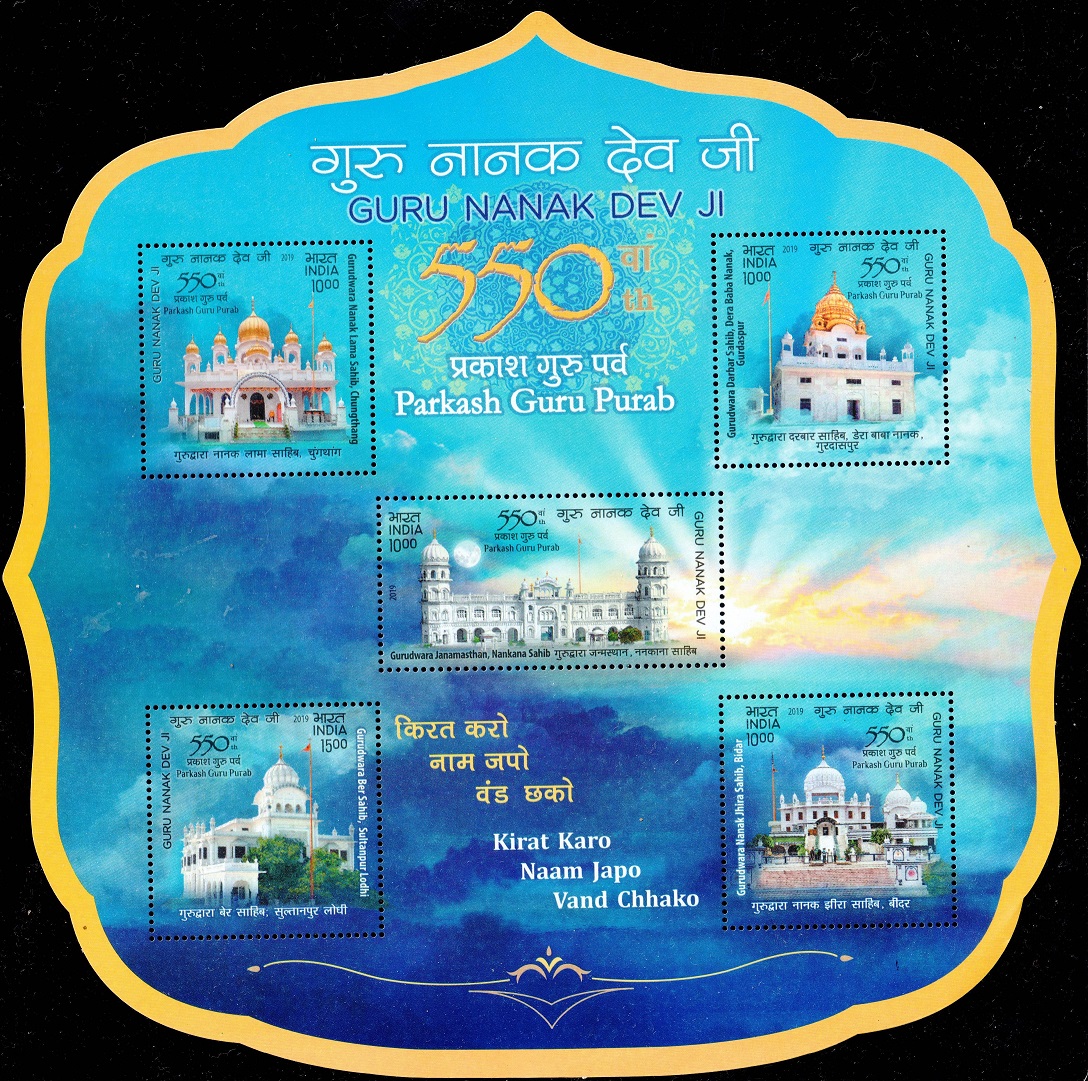
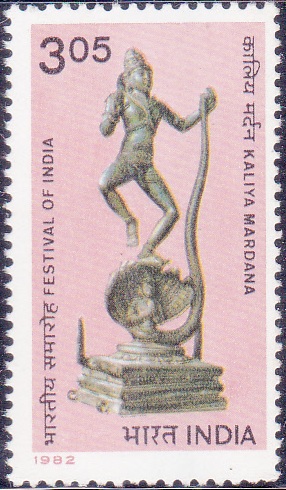
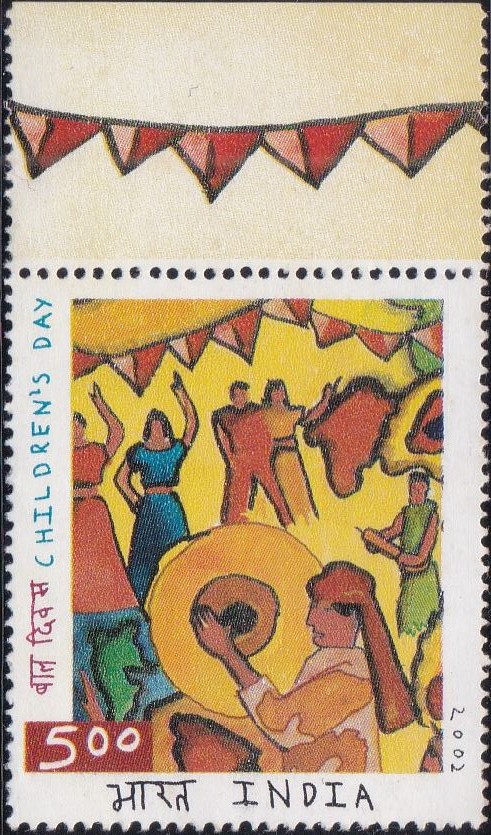
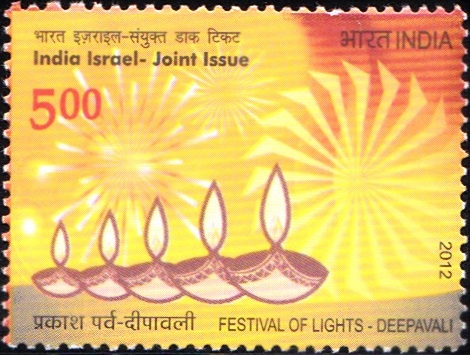
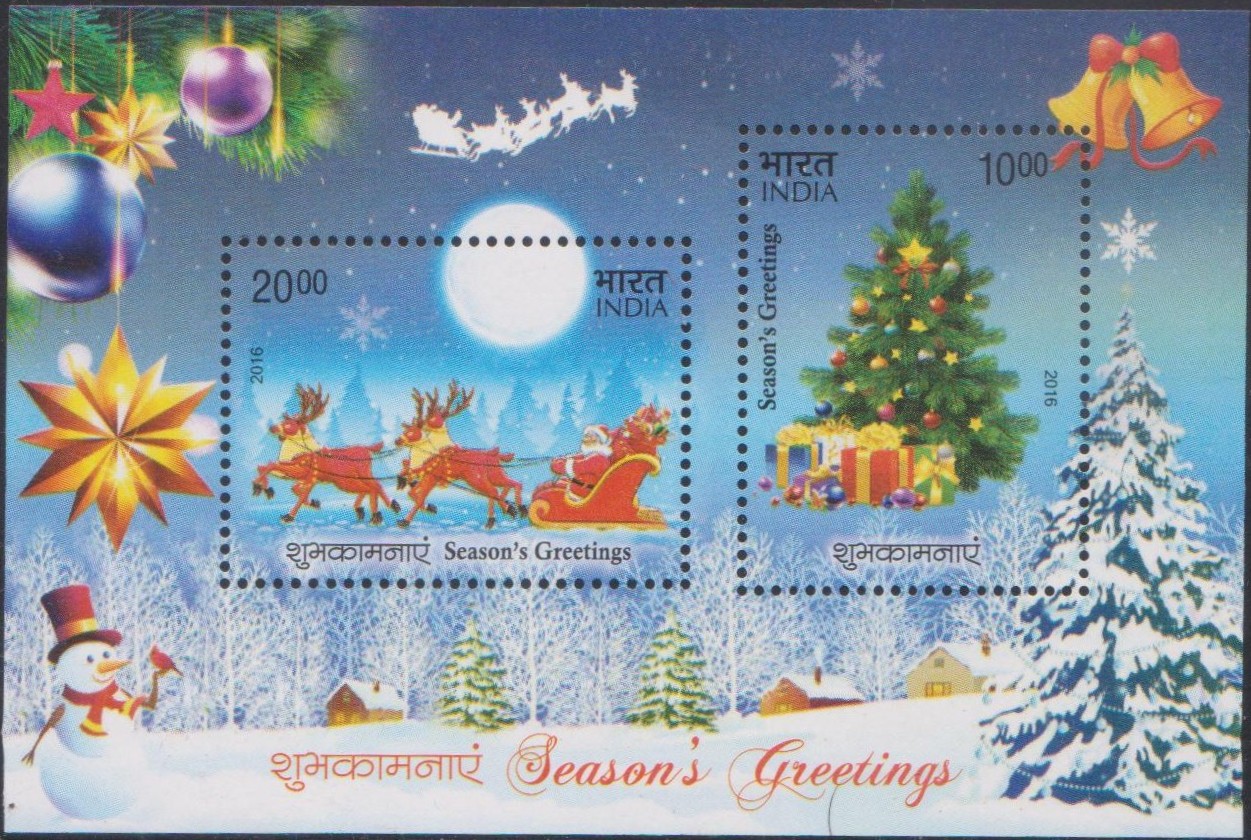
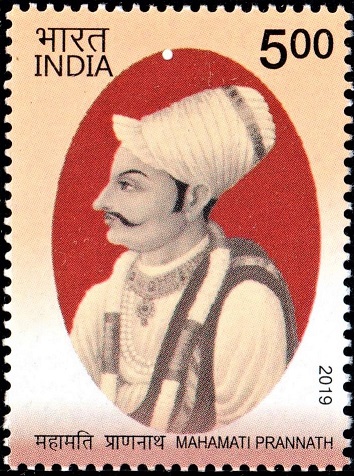
[…] learned people were impressed by his philosophy. In Haridwar, in the year Samvat 1735, the great Kumbh Mela took place and there Mahamati Prannath introduced a number of people to Nijanand Sampraday. […]
[…] teachers, scholars and religious lovers and in the year 1932 itself, on the occasion of Haridwar Kumbh, in Haridwar–Rishikesh, he exchanged scholarly thoughts with Pt. Madan Mohan […]